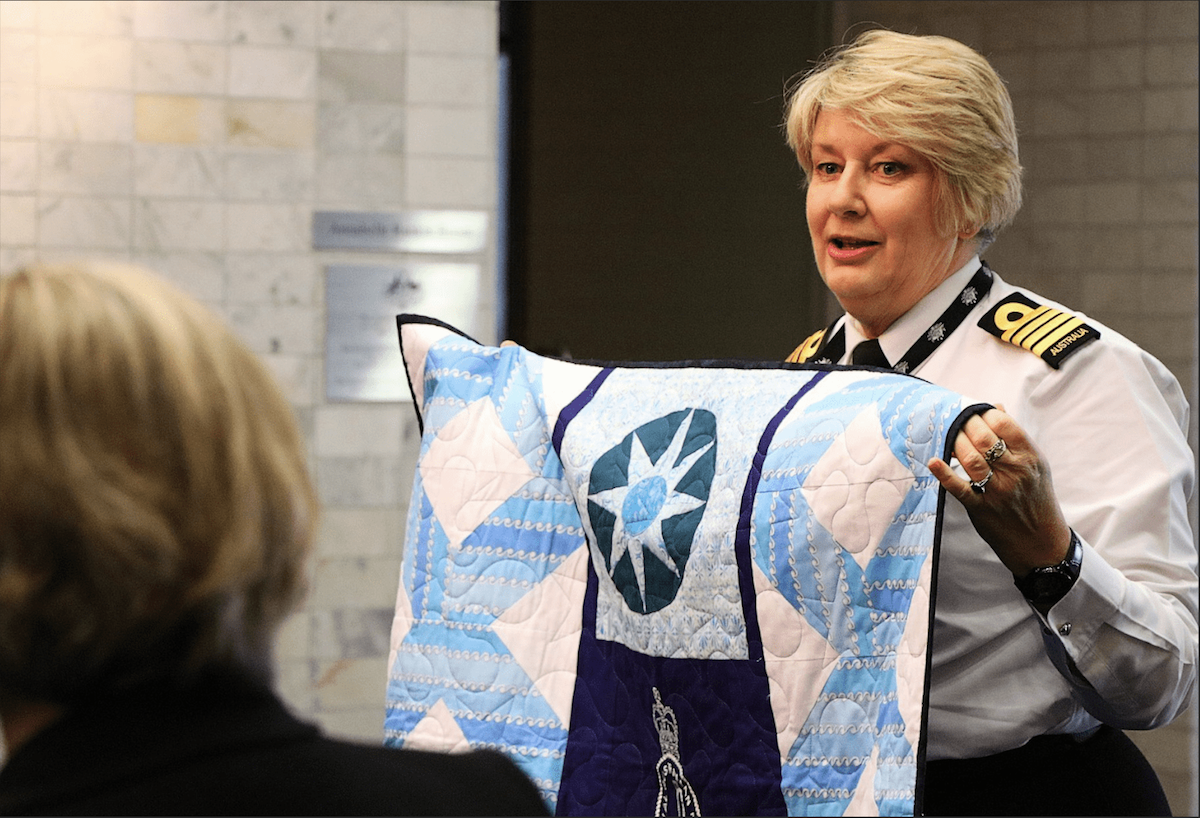The Role of Ambassador for Women and Girls is all about championing Australia’s commitment to gender equality and upholding the human rights of women and girls.
The position was established in 2011 by Julia Gillard. Since then, five women have held the role, with the current Ambassador being Christine Clarke.
OnImpact spoke with the Ambassador about the impact of gender-lens investing on neighbouring countries, the challenges of implementing gender-focussed programs in regions with diverse cultures, as well as her background as Commanding Officer of the Naval base, HMAS Kuttabul in Sydney.
A Commitment to Gender Issues
For the Department of Foreign Affairs and Trade (DFAT), integrating a gender lens into its diplomacy, outreach and program work is a priority.
Christine Clarke explains that promoting gender equality is an economic development opportunity, as well as a basic human rights issue.
“The Ambassador’s role is to champion Australia’s work to promote gender equality, including women’s economic empowerment, which is what this space is about. It includes the vital importance of women’s leadership, bringing an end to sexual and gender-based violence and ensuring that women have sexual and reproductive health and rights.” Christine says.
“And of interest to me given my background, it’s also about the full implementation of the women, peace and security agenda.”
Investing Through a Gender Lens
Stronger trade and economic development in our region matters to our neighbours, and to Australia.
Investing in Women (IW) is a DFAT initiative that integrates an economic development model, with gender equality priorities.
“DFAT has been supporting partners, working on gender lens investing for many, many years.” Christine says.
“And since 2017, when the Investing in Women programme began to provide substantial support to gender lens investing, we’ve seen evidence of the progress with our partners and the influence of it is extending to the broader impact investing community in the region. And independent reports and research confirm that the number and proportion of gender lens investing deals in the region continues to rise.”
A report from Intellecap suggests that in the three years since Investing in Women (IW) began, the region registered 39 GLI deals, deploying $US350 million. Compared to 33 deals, deploying $US43 million, made in the entire previous decade to 2016.
In terms of Australia’s contribution, the program has invested some $15 million in over 70 deals, supporting women owned and led SMEs in Indonesia, Vietnam and the Philippines. This has leveraged a further 260 million Australian dollars from private investors.
“What I’m really impressed by is that, motivated by their partnerships with Investing in Women, our impact investing partners have gone on to raise millions in additional follow-on gender lens funds independent of IW support.” Christine says.
A Gender Focus Amidst Cultural Diversity
At the heart of diplomacy is the opportunity to building bridges between countries. Christine explained that this is front of mind, and that progress is being made.
“Of the countries we focus on in Investing in Women, I have travelled to Indonesia. What we see with local leadership in the private sector and in communities is social change. With local leaders we are seeing that gender norms on women’s economic roles do change, how they change and what the issues are. This will be highlighted in Monash University’s soon to be released research results on gender, micro enterprise and SME’s.” Christine says.
“The report will point to the effects that are achieved by investing in women’s enterprises. What we find is that women’s first priority is putting food on their family’s tables, and that can be the first enabler of empowering women – we have seen it have an impact. There is a primary benefit for women’s economic empowerment.”
‘Taking the Space’ as Navy Base Commander
Christine didn’t start out in diplomacy; she was in the Navy. And she managed to rise up the ranks and eventually took on the considerable responsibility of being the Commanding Officer of HMAS Kuttabul, a Naval port in Sydney.
It’s one thing to be a woman in the armed forces, it’s another thing entirely to take on a major leadership role.
“I had over 2000 people that I was responsible for. It was a very interesting environment at the time that I was the Commanding Officer, I was the only female Commanding Officer of a Navy base in Australia.” Christine says.
“It can be a bit of an isolating experience. While I was supported by some, there were also those who were not comfortable with having a woman in command. But their discomfort highlighted to me how important women’s leadership is. And for many years, I was the only woman in the room, at decision making tables, and that really shaped my leadership philosophy.”
Christine leaned-in to the challenges she was faced with, and it seems the obstacles themselves became the mission.
“I did have a boss who told me that he was going to make sure that no one else in my category ever fulfilled one of those Commanding Officer roles again, and I informed him that I would die in the doorway before I allowed him to close it.” Christine says.
She was determined that her pioneering work not only allow her to rise to the top, but also clear a path for others to come behind her.
“I refer to it in three ways now: hold space, make space, and take space.” Christine says.
“Any space that women have made, we need to hold that space. And not just in a navy context, I mean that more broadly. We’ve seeing regression on gender equality in the world, particularly since the pandemic. So, we need not to lose any more space. Make space is really me as a leader making space for other women to come through. And supporting them in coming through to those decision-making tables.”

